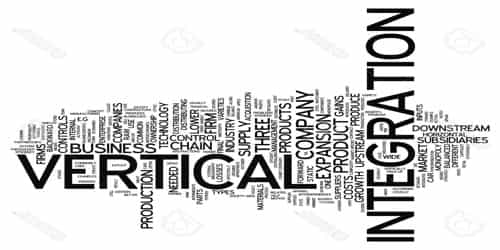When a company expands its business into areas that are at different points on the same production path, such as when a manufacturer owns its supplier and/or distributor then it’s known as vertical integration. It is a strategy where a firm acquires business operations within the same production vertical. It is when a company controls more than one stage of the supply chain.
Here’s a look at the pros and cons of a vertical-integration strategy:
PROs: Companies can benefit by developing a specialty product and selling it through their own retail outlets, according to business professor Lindsay Meredith of Simon Fraser University. Examples include the chocolatier Purdy’s Chocolates of Vancouver, which operates 57 retail outlets in B.C., Alberta, and Ontario, and Vancouver yoga wear designer and seller Lululemon Athletica Inc.
Vertical integration potentially offers the following advantages:
- Reduce transportation costs if common ownership results in closer geographic proximity.
- Improve supply chain coordination.
- Provide more opportunities to differentiate by means of increased control over inputs.
- Capture upstream or downstream profit margins.
- Increase entry barriers to potential competitors, for example, if the firm can gain sole access to a scarce resource.
- Gain access to downstream distribution channels that otherwise would be inaccessible.
- Facilitate investment in highly specialized assets in which upstream or downstream players may be reluctant to invest.
- Lead to an expansion of core competencies.
CONs: Product development and retail are distinct businesses, and doing both takes a lot more work. Many entrepreneurs who try to focus on too many things often “confuse, distract and harm the core business,” business adviser Trevor Throness said. Vertical integration potentially has the following disadvantages:
- Capacity balancing issues. For example, the firm may need to build excess upstream capacity to ensure that its downstream operations have sufficient supply under all demand conditions.
- Potentially higher costs due to low efficiencies resulting from lack of supplier competition.
- Decreased flexibility due to previous upstream or downstream investments. (Note, however, that flexibility to coordinate vertically related activities may increase.)
- Decreased ability to increase product variety if significant in-house development is required.
- Developing new core competencies may compromise existing, competencies.
- Increased bureaucratic costs.














